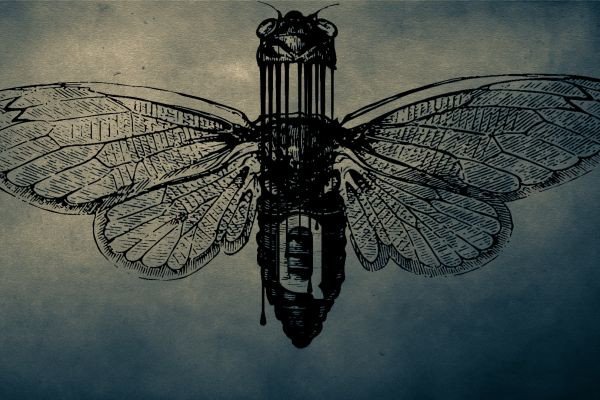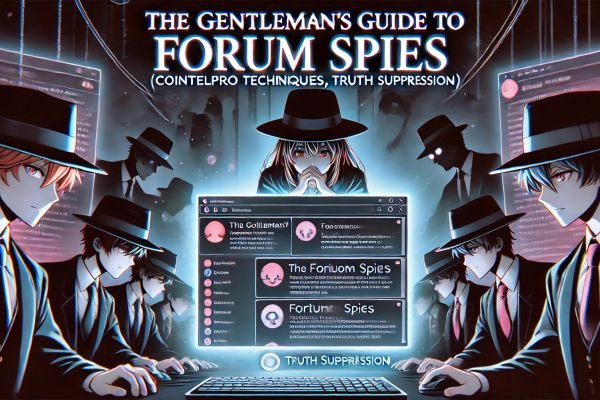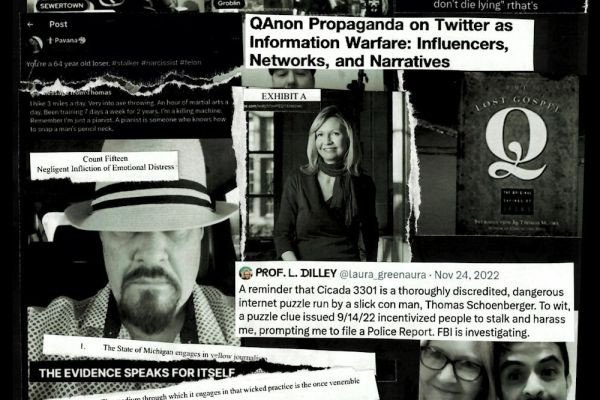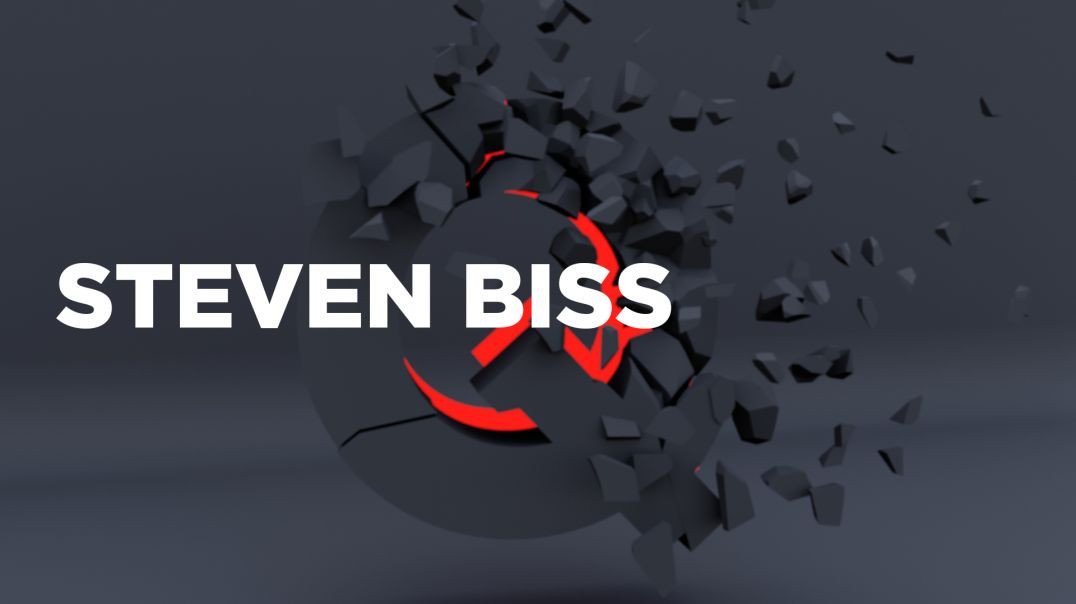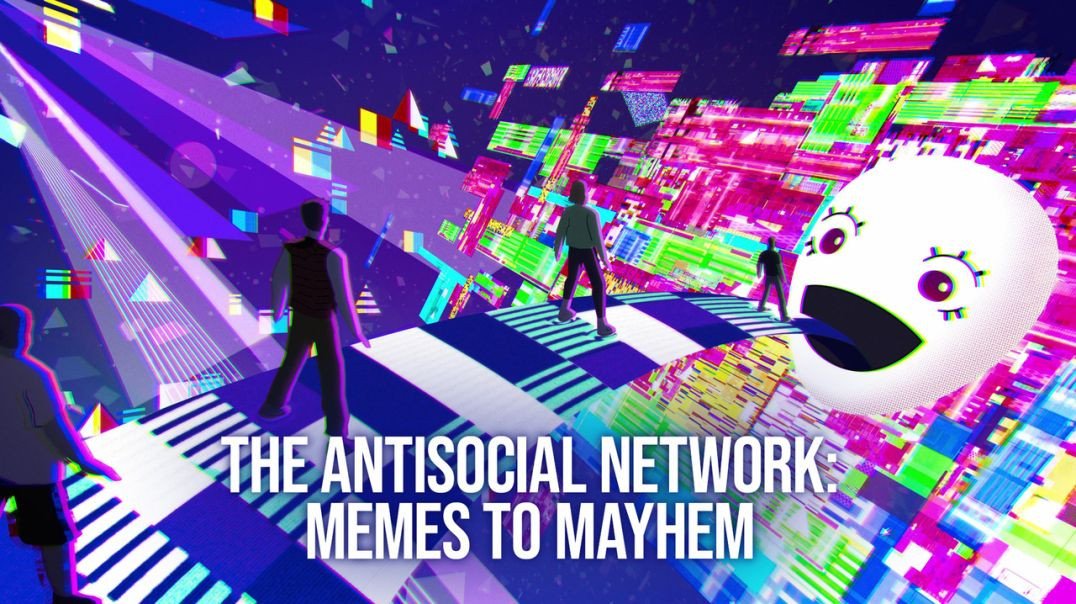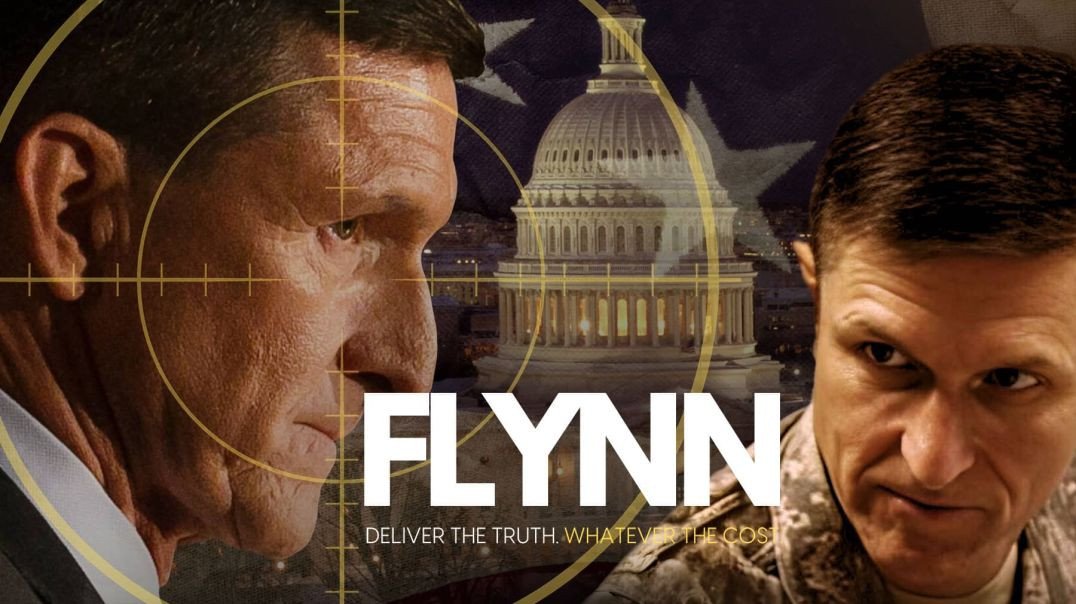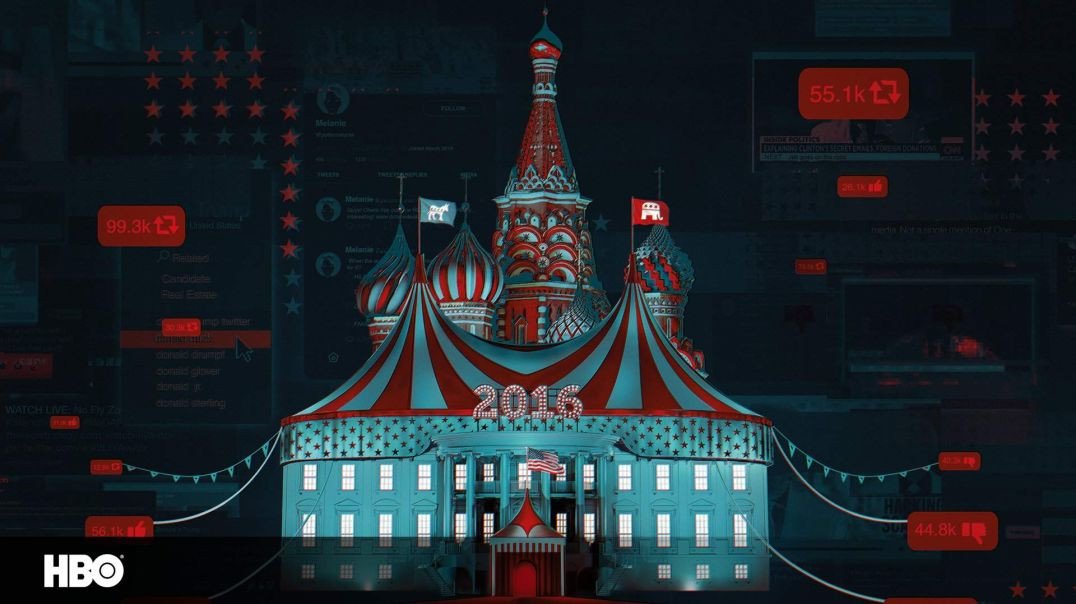I. Introduction: The Nexus of Fringe Intelligence and Digital Mythmaking
The contemporary information landscape is characterized by a blurring of boundaries – between fact and fiction, journalism and activism, intelligence analysis and conspiracy theory. Within this complex terrain, certain figures emerge as potent examples of how individuals leverage past institutional affiliations and the dynamics of digital culture to cultivate audiences for fringe narratives. This report examines two such figures: Benjamin Fulford, a former financial journalist turned purveyor of geopolitical conspiracies involving secret societies, and Robert David Steele, a self-proclaimed former CIA officer and Open Source Intelligence (OSINT) advocate who descended into promoting QAnon and virulent antisemitism.
By tracing their biographical trajectories, contextualizing them within pivotal events like the rise of QAnon and the impact of WikiLeaks, mapping their connections to a network of associated actors, and deconstructing their core narratives, this analysis aims to situate Fulford and Steele within the broader ecosystem of disinformation. It explores how figures operating on the periphery can gain influence, the recurring themes that animate these digital subcultures (from clandestine cabals to reality-shaping pronouncements), and the potential strategies, such as the exploitation of hyperstition, employed within these networks.
Fulford and Steele, though distinct in their specific claims and origins, represent archetypes within this modern labyrinth. Both appear to have embarked on their alternative paths fueled by a degree of disillusionment with established systems. Fulford's transition from a claimed position at Forbes Japan 1 to disseminating theories about a global "Sabbatean mafia" 1 implies a rejection of mainstream financial reporting frameworks. Steele, more explicitly, positioned himself as a reformer frustrated by the Central Intelligence Agency's (CIA) perceived resistance to the power of open-source information and its entrenched culture of secrecy.4 This initial posture of institutional critique resonates powerfully with audiences harboring similar feelings of alienation or distrust toward mainstream media and government.
Crucially, both figures cultivated an aura of possessing unique, insider knowledge, a key element in lending credibility to often extraordinary claims. Fulford built his narrative around purported access to powerful, hidden Asian groups and secret societies like the White Dragon Society 8, while Steele consistently leveraged his claimed background as a CIA clandestine case officer 4 and co-founder of the Marine Corps Intelligence Activity.4 While official documentation confirms some level of interaction between Steele and the CIA 12, the full extent and nature of his service remain primarily self-reported. Regardless of complete verification, this carefully constructed "insider" status allowed both men to frame their pronouncements not merely as opinions, but as privileged revelations escaping the confines of official narratives and verification protocols. Their careers illustrate the potent combination of leveraging past authority and mastering the participatory dynamics of digital mythmaking to carve out influential niches within the complex architecture of contemporary disinformation.
II. The Renegades: Biographical Trajectories
Understanding the influence of figures like Benjamin Fulford and Robert David Steele requires examining their individual paths, particularly the pivotal moments where their careers diverged from conventional tracks into the realms of alternative news and conspiracy.
A. Benjamin Fulford: From Financial Journalism to Fantastical Geopolitics
Benjamin Fulford, born in Canada in 1961 1, presents a background seemingly rooted in mainstream financial journalism before a sharp pivot towards esoteric geopolitical narratives. Multiple biographical sources describe him as the former Asia-Pacific bureau chief or "ex-chief editor" for Forbes Magazine in Japan.1 While the precise nature and tenure of this role lack independent confirmation within the provided materials, the consistent reference to a connection with a prestigious financial publication like Forbes served as an initial foundation for his credibility, particularly when discussing global financial matters.
Around 2005, Fulford's public focus shifted dramatically. He began producing lectures, articles, and videos centered on elaborate conspiracy theories, prominently featuring critiques of what he terms the "Sabbatean mafia" – an alleged hidden cabal controlling global finance and politics.1 This marked his transition from journalist to alternative news figure and conspiracy theorist. He established his base in Tokyo, Japan, eventually acquiring Japanese citizenship in 2009.1
Fulford's subsequent geopolitical commentary, disseminated primarily through his blog and video appearances, revolves around several core themes. He consistently portrays a world locked in a clandestine battle between this Western-centric "cabal" (often linked to historical banking families and shadowy power structures) and opposing forces, frequently centered in Asia.13 His narratives often incorporate predictions of imminent, dramatic events, such as the takedown of the cabal, global financial resets, mass arrests, or the release of suppressed technologies.17 These predictions, while rarely materializing as described, maintain audience engagement through a sense of impending, world-altering change.
Central to Fulford's narrative is his claim to represent or be a spokesperson for the "White Dragon Society" (WDS). He portrays the WDS as an ancient, powerful alliance of Asian secret societies, royal families, and other groups dedicated to overthrowing the Western cabal and establishing a new global order.8 The WDS functions as a narrative device, providing a seemingly potent, albeit unverifiable, force backing his claims and threats against the alleged cabal. This invocation of hidden, benevolent agencies battling malevolent ones is a common trope within the genre of "metaphysical conspiracism," which blends conspiratorial thinking with millennial or esoteric beliefs about hidden knowledge and planetary transformation.8
Fulford's approach often involves weaving recognizable geopolitical events and tensions – such as the rise of China, historical conflicts over resources like oil 15, critiques of international institutions 14, or debates about financial systems 20 – into his overarching conspiratorial framework. By grounding fantastical claims about secret societies and cabals in real-world issues, he creates narratives that appear relevant and explanatory to audiences already skeptical of mainstream accounts of global affairs. The inherent unverifiability of the WDS and the "Sabbatean mafia" allows these narratives to remain flexible and adaptable, readily incorporating new events into the ongoing mythical struggle.
B. Robert David Steele: The OSINT Crusader's Descent into Conspiracy
Robert David Steele (1952–2021) 4 followed a different path, transitioning from a claimed career within the US intelligence community to a vocal proponent of OSINT reform, and ultimately, into the depths of extremist conspiracy theories. He asserted a background that included service as a clandestine case officer for the CIA 4 and a role as the senior civilian responsible for creating the Marine Corps Intelligence Center (MCIC) 4, part of a self-reported twenty years in intelligence.5 A declassified CIA letter confirms interaction with Steele regarding presentations, lending some credence to his connections, though not verifying specific clandestine roles.12
Steele became a prominent and early advocate for Open Source Intelligence (OSINT).4 His core argument, developed through books like On Intelligence: Spies and Secrecy in an Open World (2000) 9 and The Open-Source Everything Manifesto (2012) 6, was that the traditional intelligence community, particularly the CIA, was overly focused on secrets and dangerously neglected the vast wealth of valuable information available in the public domain.4 He argued that most intelligence needs could be met more effectively and cheaply by leveraging open sources and private sector expertise.5 He coined terms like "virtual intelligence" and "information peacekeeping" to describe frameworks for harnessing distributed knowledge for global stability.4 His advocacy included training thousands of officers from numerous countries and writing OSINT handbooks for various defense and intelligence organizations.6
However, Steele's trajectory took a marked turn towards conspiracism. He became a regular guest on Alex Jones's Infowars show.4 By June 2017, he was making outlandish claims, such as alleging NASA operated a secret slave colony on Mars populated by kidnapped children.4 His embrace of extremism intensified; his blog cited the fabricated antisemitic text The Protocols of the Elders of Zion numerous times.4 In September 2019, he explicitly labeled Jews in finance a "secret society" exempt from laws, called for the incarceration of those "insufficiently loyal," described the Holocaust as a "contrived myth," and termed Zionism a "cancer on humanity" requiring eradication.4 He later promoted 9/11 conspiracy theories blaming Zionists.4
Steele became deeply involved with the QAnon phenomenon 4, appearing in documentaries about it 11 and promoting its narratives. There was also speculation linking him and fellow Veteran Intelligence Professionals for Sanity (VIPS) member William Binney to the recruitment of networks that formed the QAnon cult.37 In 2021, he organized the "Arise USA" tour across all 50 states, featuring speakers like Oath Keeper Richard Mack and conspiracy promoter Sacha Stone.4 The tour aggressively promoted Donald Trump's false claims of 2020 election fraud and vehemently denied the reality of the COVID-19 pandemic, labeling it a hoax and vaccines as "toxic".4
Ironically, Steele contracted COVID-19 during the final leg of the tour and died from the illness on August 29, 2021.4 His death underscored the tragic consequences of the pandemic denialism he had so fiercely promoted.39
Steele's journey suggests a complex evolution. His initial OSINT advocacy, rooted in a critique of excessive government secrecy 4 and a belief in the power of publicly available information 6, may have inadvertently created a vulnerability. An extreme interpretation of "Open Source Everything" 6 could potentially lead to a wholesale rejection of vetted expertise and an embrace of any narrative found outside distrusted mainstream channels. The skills honed to uncover obscure public data could, without rigorous critical evaluation, be turned towards finding "evidence" supporting pre-existing conspiratorial beliefs. Throughout his descent, Steele consistently leveraged his "former CIA officer" status 4, demonstrating how the symbolic capital of past institutional affiliation can be instrumentalized to lend credibility to fringe narratives, particularly among audiences predisposed to seeking "insider" revelations.
III. Landmarks in the Disinformation Ecosystem
The narratives and networks surrounding Fulford and Steele did not emerge in a vacuum. They intersect with and were influenced by broader trends and specific events within the digital information landscape, particularly those that fostered secrecy, challenged established truths, or provided platforms for conspiratorial thinking.
A. Seeds of Secrecy: Cicada 3301, WikiLeaks, and the Erosion of Trust
The early 2010s saw the emergence of phenomena that, in different ways, tapped into themes of hidden knowledge, cryptography, and challenges to institutional authority. Cicada 3301 appeared online between 2012 and 2014, presenting a series of highly complex puzzles attributed to an anonymous entity named "3301".43 Originating on imageboards like 4chan 43, the puzzles demanded expertise in cryptography, steganography (hiding messages within files, exemplified by the "Dead-End Duck" clue requiring the 'OutGuess' program 44), data security, number theory (referencing prime numbers and the Euler totient function 47), and internet anonymity.43 Clues were embedded in digital images, original music, unpublished runic texts (the Liber Primus), and even physical posters placed in locations across the globe, requiring real-world travel or coordination to retrieve.43
The stated purpose was to recruit "highly intelligent individuals" 43, but the ultimate goal and the identity of "3301" remain unknown. Speculation ranged wildly, suggesting it could be a recruitment tool for intelligence agencies like the NSA, CIA, or MI6, a secret society focused on cryptography and privacy, a cyber mercenary group, or simply an elaborate Alternate Reality Game (ARG).43 Marcus Wanner, one of the few known individuals to have reportedly solved the 2012 puzzle, claimed winners were questioned about their beliefs on information freedom and censorship before being invited to a private forum to work on projects furthering the group's ideals, such as developing decryption methods or "dead man's switch" software for whistleblowers.43 While Cicada 3301 itself denied involvement in illegal activities 43, its mystique and methods resonated within online subcultures. Its structure—anonymous online entity dropping cryptic clues requiring collective interpretation and specialized skills—prefigured elements later seen in QAnon.50 Figures like Manuel "Defango" Chavez and Thomas Schoenberger have been linked, sometimes contentiously, to both Cicada and the origins of QAnon, suggesting potential continuity or inspiration.35 The recent appearance of a ransomware group adopting the Cicada 3301 name, although disavowed by the original group, further highlights its enduring cultural cachet in cyber-related contexts.43
Operating in parallel, WikiLeaks, founded by Julian Assange in 2006 55, aimed to promote transparency by publishing classified or sensitive documents leaked from anonymous sources.55 Inspired by Daniel Ellsberg's Pentagon Papers release 55, WikiLeaks published millions of documents over the years. Major releases included the 2007 Guantanamo Bay operating manual 56, the "Collateral Murder" video showing a US helicopter attack in Baghdad (2010) 58, vast archives of US military logs from the Iraq and Afghanistan wars (2010) 55, and hundreds of thousands of classified US State Department diplomatic cables ("Cablegate," 2010-2011).55 These leaks, largely attributed to US Army analyst Chelsea Manning 60, exposed potential war crimes, revealed grim realities of ongoing conflicts (including potentially thousands more civilian deaths than officially acknowledged 61), detailed covert diplomatic dealings 60, and caused significant international embarrassment and diplomatic fallout.57
Later, during the 2016 US presidential election, WikiLeaks published hacked emails from the Democratic National Committee (DNC) and Hillary Clinton's campaign manager, John Podesta.34 These releases damaged the Clinton campaign and fueled narratives of internal party bias.55 However, WikiLeaks also faced heavy criticism for potential national security risks, inadequate redaction of names in released documents 57, and for actively promoting conspiracy theories, notably the false narrative surrounding the murder of DNC staffer Seth Rich.55 The organization's activities placed it at the center of debates on press freedom, whistleblowing ethics, and national security 57, and led to protracted legal battles involving Assange and Manning.57 Figures associated with the networks under examination here interacted with WikiLeaks; Trevor Fitzgibbon's PR firm represented the organization and Manning 65, and Bijan Kian reportedly utilized WikiLeaks cables in his work.67
The emergence of Cicada 3301 highlights how the allure of uncovering hidden knowledge can be gamified, blurring lines between collaborative puzzle-solving, ARG participation, and potentially real-world recruitment or influence operations.43 This dynamic, blending playfulness with serious undertones of secrecy and skill, arguably conditioned online communities for phenomena like QAnon, which adopted similar mechanics of cryptic pronouncements requiring collective decoding.50 The ambiguity inherent in Cicada's purpose served as a template later exploited by QAnon, where the distinction between a game (or LARP) and reality became a central, manipulative feature.50
WikiLeaks, while ostensibly pursuing transparency, wielded a double-edged sword. Its massive data dumps, often lacking context or sufficient vetting, undeniably contributed to the erosion of trust in government and diplomatic institutions.55 This created fertile ground for conspiracy theories by providing vast amounts of raw material that could be easily misinterpreted or cherry-picked by those seeking to confirm pre-existing biases.62 Its direct involvement in the 2016 election 55 and its promotion of the Seth Rich conspiracy 55 directly fed into narratives later amplified by figures like Ed Butowsky 63 and became entangled with the "Russia Narrative" and QAnon precursors like Pizzagate.34 Together, Cicada 3301 and WikiLeaks exemplify how challenges to secrecy and the gamification of information discovery, whether intentional or not, helped shape an environment where trust was fractured and alternative, often conspiratorial, explanations could flourish.
B. The Storm Unleashed: QAnon's Genesis, Evolution, and Key Promoters
Building upon the groundwork laid by earlier internet phenomena and conspiracy theories like Pizzagate 34, QAnon emerged in October 2017 on the anonymous imageboard 4chan's "/pol/" (Politically Incorrect) board.35 An anonymous user, signing posts as "Q" and claiming to be a high-level government insider with "Q clearance" (a real US Department of Energy clearance level associated with nuclear secrets 68), began posting cryptic messages known as "Q drops" or "breadcrumbs".68 These drops purported to offer insider knowledge about a secret war being waged by then-President Donald Trump against a global "cabal" or "Deep State".68 Q soon migrated from 4chan to the even less moderated imageboard 8chan (later rebranded as 8kun) 68, which became the primary home for Q drops.
The core QAnon belief system coalesced around several key tenets: the world is secretly controlled by a cabal of Satan-worshipping, cannibalistic pedophiles composed of elite politicians (primarily Democrats like Hillary Clinton), celebrities (like Oprah Winfrey), and financiers.31 This cabal allegedly operates a global child sex trafficking ring and harvests "Adrenochrome" from tortured children for occult rituals or life extension.33 Donald Trump is viewed as a messianic figure secretly fighting this cabal.68 A future event, known as "The Storm," is anticipated, involving mass arrests, military tribunals (often at Guantanamo Bay), and the execution of cabal members.68 QAnon readily absorbed other conspiracy theories, from JFK Jr. faking his death to 9/11 trutherism and anti-vaccine narratives, becoming a "big tent" conspiracy.77 Significantly, many QAnon narratives mirrored or incorporated longstanding antisemitic tropes, such as the idea of a secret global cabal engaging in child sacrifice (reminiscent of blood libel).35
QAnon spread virally from fringe imageboards to mainstream social media platforms like Facebook, Twitter, YouTube, Instagram, and TikTok, facilitated by influencers, aggregator websites (like QAnon.pub and QAgg 72), and dedicated online communities ("Anons," "bakers") who interpreted Q's cryptic drops.34 Key figures associated with the networks discussed in this report became prominent QAnon promoters, including Robert David Steele 4 and Michael Flynn.34 Others implicated in its promotion or origins include Manuel "Defango" Chavez 33, Thomas Schoenberger 35, Roger Stone 35, and potentially Laura Dilley through her research identifying network overlaps.35 Donald Trump himself amplified QAnon themes and refused to denounce the movement.35
The identity of "Q" remains unproven, with speculation centering on individuals like South African software engineer and 4chan moderator Paul Furber, 8chan/8kun administrator Ron Watkins (son of owner Jim Watkins) 34, or possibly Robert David Steele.34 Some, like Manuel Chavez and Thomas Schoenberger, have made conflicting claims about originating Q as a LARP or online game designed to expose disinformation or "radicalize smart people".33 This ambiguity about Q's origins—whether a genuine insider, a deliberate disinformation campaign, or a game that spiraled out of control—was part of its dynamic.
The remarkable success of QAnon appears linked not just to its sensational content but to its interactive, gamified structure. The cryptic nature of Q drops demanded active participation from followers, who engaged in collective "research" to decode messages and connect them to real-world events.50 This participatory element fostered a strong sense of community, shared purpose, and the feeling of possessing exclusive, hidden knowledge, making the movement highly engaging and resilient, even when specific predictions failed.77 QAnon functioned as a powerful gravitational force, drawing in figures with existing followings and perceived authority (like Flynn and Steele 35), integrating pre-existing conspiracy theories (Pizzagate, antisemitism 68), and connecting disparate communities, including those involved in internet puzzles like Cicada 3301 35 and New Age/occult circles.35 This convergence created a uniquely potent and multifaceted phenomenon that moved from the digital fringe to influence real-world politics, culminating in events like the January 6th Capitol riot.69
C. Geopolitical Entanglements: The "Russia Narrative," Flynn, Kian, and the NowRuz Connection
The period surrounding the 2016 US presidential election was dominated by intense debate and investigation into Russian interference, a complex issue that became deeply intertwined with domestic political polarization and provided fertile ground for competing narratives and conspiracy theories. The core "Russia Narrative" centered on findings by the US intelligence community that Russia engaged in a multi-faceted campaign involving hacking (targeting the DNC and Clinton campaign figures), disinformation spread via social media (often through fronts like the Internet Research Agency, or IRA), and other active measures designed to undermine Hillary Clinton's candidacy and benefit Donald Trump.55
This narrative was amplified by the controversial Steele Dossier, a collection of memos compiled by former British intelligence officer Christopher Steele, alleging conspiracy and coordination between the Trump campaign and Russia.80 While some aspects of the dossier aligned with later intelligence findings (e.g., Russian preference for Trump, contacts between campaign associates and Russians 80), many of its specific and salacious claims remained unverified or were later discredited.80 The FBI's investigation into these matters, codenamed "Crossfire Hurricane" 86, began in mid-2016 (triggered by information concerning George Papadopoulos, not the Steele Dossier 80) and eventually led to the appointment of Special Counsel Robert Mueller.81 Mueller's investigation confirmed Russian interference but did not establish sufficient evidence of a criminal conspiracy between the Trump campaign and Russia.81
Concurrently, President Trump and his allies aggressively pushed a counter-narrative, dismissing the investigations as a politically motivated "hoax" or "witch hunt" orchestrated by a "Deep State" conspiracy involving figures within the FBI and intelligence community.82 This counter-narrative was significantly advanced by figures like Devin Nunes, then-Chairman of the House Intelligence Committee 89, and later fueled the Durham special counsel investigation, which reviewed the origins of the FBI probe but ultimately did not substantiate claims of a conspiracy against Trump.87
Central to these events was Michael Flynn, a retired Army lieutenant general and former Director of the Defense Intelligence Agency (DIA) under Obama.88 Flynn became an early and prominent advisor to the Trump campaign 88 and was appointed National Security Advisor upon Trump's inauguration, though he served only 22 days.92 His downfall came swiftly due to revelations about his pre-inauguration conversations with Russian Ambassador Sergey Kislyak regarding US sanctions imposed on Russia, and his subsequent misleading statements about these conversations to Vice President Mike Pence and the FBI.88 Flynn eventually pleaded guilty to lying to the FBI, although the Justice Department later moved to dismiss the case under controversial circumstances before Flynn received a presidential pardon.88 The FBI had opened an investigation into Flynn (Crossfire Razor) in August 2016 concerning his potential ties to Russia.88
Parallel to the Russia investigation, Flynn and his business partner, Bijan Kian (also known as Bijan Rafiekian), became embroiled in controversy over their consulting firm, Flynn Intel Group (FIG). FIG accepted a contract worth approximately $530,000-$600,000 from Inovo BV, a Dutch company owned by Turkish businessman Ekim Alptekin.67 The work, largely managed by Kian 67, involved a campaign to discredit Fethullah Gülen, a Turkish cleric living in the US whom Turkish President Erdoğan blamed for a failed 2016 coup attempt.67 Evidence later emerged suggesting Alptekin was acting as a conduit for the Turkish government, which sought Gülen's extradition.96 FIG initially failed to register its work under the Foreign Agents Registration Act (FARA), leading Flynn to retroactively register 67 and Kian to be indicted in 2018 for conspiracy and acting as an unregistered foreign agent.96 Kian's legal battle saw a conviction, a judge's dismissal of the verdict citing insufficient evidence, and a subsequent reinstatement of the conviction by an appeals court.98 Kian had also served on the Trump transition team alongside Flynn, focusing on intelligence agencies.67
An intriguing nexus point for several of these figures was the NowRuz Commission, a Washington D.C.-based non-profit ostensibly dedicated to promoting the traditions of Nowruz (Persian New Year).94 Co-founded in 2010 by Bijan Kian, businessman Nasser Kazeminy, and Kazakhstan's then-ambassador Erlan Idrissov 94, the commission boasted a board and advisory council that included Ekim Alptekin (listed as Vice Chairman and Ambassador for Turkey), Robert Kelley (FIG's General Counsel, listed as Secretary General), and, notably, Russian Ambassador Sergey Kislyak.94 Michael Flynn was a visible presence at the commission's galas, photographed alongside Kian and participating in award presentations.94 While participants insisted relationships were formed independently 94, the commission undeniably served as a social and networking hub connecting individuals who would later become central figures in the Turkey lobbying affair and the Russia investigation.94
The NowRuz Commission and Flynn Intel Group illustrate how seemingly legitimate non-profit or private business structures can function as hubs facilitating connections and potentially masking activities with significant geopolitical implications. The overlap in personnel involved in the commission, the Turkey lobbying effort, and the Russia probe highlights the importance of mapping these less visible networks.94 Furthermore, the entire "Russia Narrative" saga demonstrates the intense politicization of intelligence matters. The complex reality of foreign influence operations and counterintelligence investigations became fodder for competing narratives, weaponized by political actors like Trump and Nunes to allege vast conspiracies ("Deep State" hoax) 82, while opponents sometimes stretched evidence to fit desired conclusions.82 Figures like Flynn were transformed into symbols within these warring narratives, obscuring nuanced realities behind partisan battle lines.
D. Digital Battlegrounds: Bannon, Online Influence Campaigns, and Networked Conflicts
The ecosystem inhabited by Fulford, Steele, and their associates is deeply embedded within digital battlegrounds where information, influence, and conflict play out online. Key figures and entities exemplify the strategies and tools employed in these spaces.
Steve Bannon stands out as a figure operating at the confluence of media, political strategy, and controversial data practices. His background includes service in the US Navy, investment banking at Goldman Sachs, acting directorship of the Biosphere 2 project, and executive production roles in Hollywood.105 He co-founded Breitbart News, a far-right media outlet he explicitly described in 2016 as "the platform for the alt-right".105 Bannon served as CEO of Donald Trump's 2016 presidential campaign and subsequently as White House Chief Strategist and Senior Counselor, before being dismissed in August 2017.105 His ideological leanings draw on populism and nationalism, with alleged influences from esoteric thinkers like Julius Evola, a figure also admired by Russian ideologue Alexander Dugin.35 Bannon faced significant legal issues, including a conviction for contempt of Congress related to the January 6th investigation (for which he served prison time) and federal fraud charges related to the "We Build the Wall" campaign (pardoned by Trump), followed by related state charges in New York.105
Crucially, Bannon was also a Vice President of Cambridge Analytica 105, the political consulting firm notorious for harvesting personal data from millions of Facebook users without informed consent.105 This data was allegedly used to build psychometric profiles for targeted political advertising during the 2016 Trump campaign and the UK's Brexit referendum.105 The firm employed tactics like micro-targeting voters deemed susceptible (e.g., "neurotic or worried") with personalized, often manipulative messages delivered via "dark posts" – targeted ads visible only to specific users.106 While Bannon later claimed ignorance of the Facebook data mining specifics 107, his leadership role placed him at the heart of an operation that represented a significant escalation in the use of data analytics and potentially deceptive techniques for political influence.
The activities of Bannon and Cambridge Analytica exemplify the industrialization of digital influence, shifting from organic online discourse towards data-driven, psychologically targeted campaigns.105 This professionalized approach complements, and sometimes intersects with, the more chaotic, user-driven dynamics seen in phenomena like QAnon. Bannon's career trajectory itself suggests a pipeline from fringe digital culture (Breitbart, alt-right) into the highest levels of political strategy 105, blurring the lines between online extremism and formal campaigning. While direct operational links between Bannon and figures like Steele appear limited in the provided data, they occupied overlapping ideological spaces and employed digital media towards similar anti-establishment ends.35
Beyond large-scale operations, these digital battlegrounds host constant, smaller-scale networked conflicts. Michael Flynn utilized social media extensively to promote his views and QAnon narratives.35 The landscape is also marked by high-profile feuds conducted via livestreams and social media platforms [User Query], often involving figures operating within the conspiracy and alternative news space, such as Manuel "Defango" Chavez and Thomas Schoenberger, whose online disputes and claims about QAnon's origins have become part of the lore.51 This reflects the broader use of social media for narrative warfare, propaganda, harassment, and community building observed in QAnon 35 and state-sponsored campaigns like Russia's.81
The trajectory of Lara Logan also illustrates the dynamics of these digital battlegrounds. Once a respected CBS foreign correspondent, known for reporting from dangerous war zones 112 (though also involved in controversy, notably a retracted 2013 Benghazi report 112), Logan left CBS in 2018.112 She subsequently transitioned into a role as a commentator, primarily on Fox News platforms (including Fox Nation 115), becoming a fierce critic of mainstream media and increasingly promoting conspiracy theories and inflammatory rhetoric.115 Her statements have included comparing Dr. Anthony Fauci to Nazi doctor Josef Mengele 115, spreading misinformation about COVID-19 and vaccines 115, promoting antisemitic tropes about global control and "elites dining on the blood of children" 112, and endorsing the Pizzagate conspiracy theory as "all true".112 Her transformation highlights how established media figures can pivot towards fringe narratives, leveraging their former credibility to gain traction within alternative media ecosystems.
Similarly, Trevor Fitzgibbon, whose PR firm FitzGibbon Media represented high-profile progressive clients like MoveOn.org and Planned Parenthood, also handled controversial clients like WikiLeaks and Chelsea Manning.65 His firm's abrupt closure in 2015 amidst numerous allegations of sexual harassment and assault against him 65 demonstrates the volatility and potential for scandal within these networked spaces, even among those ostensibly operating on different sides of the political spectrum. His connection, primarily through representing WikiLeaks, places him adjacent to the ecosystem where information leaks fuel both transparency efforts and disinformation campaigns.
IV. Mapping the Constellation: The Actor Network
The individuals and events discussed do not exist in isolation but form a complex network of relationships. Mapping these connections—whether through shared business ventures, political alignments, media platforms, legal battles, or overlapping narratives—is crucial for understanding the structure and dynamics of this disinformation ecosystem.
Benjamin Fulford and Robert David Steele serve as distinct nodes, operating largely in separate spheres but embodying similar archetypes: the journalist-turned-conspiracy theorist and the intelligence insider-turned-conspiracy theorist. Their direct interaction appears minimal based on available data, but they connect indirectly through the broader themes and figures within the network.
More central to the operational connections are figures like Michael Flynn and Bijan Kian. Their partnership in Flynn Intel Group (FIG) 67 and their shared involvement in the NowRuz Commission 94 and the Trump transition team 67 place them at a critical intersection of business, politics, and foreign influence operations (specifically, the Turkey lobbying effort involving Ekim Alptekin and FIG General Counsel Robert Kelley 94). Flynn's later embrace of QAnon 35 connects this political/business network directly to the conspiracy movement where Steele was also highly active.36
Steve Bannon represents another major hub, connecting high-level political strategy (Trump campaign/White House 105), influential right-wing media (Breitbart 105), and controversial data operations (Cambridge Analytica 105). His activities demonstrate the professionalization of digital influence and the mainstreaming of alt-right narratives.
The QAnon/Cicada 3301 cluster involves figures like Manuel "Defango" Chavez and Thomas Schoenberger, whose alleged roles in the origins and promotion of these phenomena are subjects of ongoing online feuds and even legal action (Schoenberger's lawsuit against academic researcher Laura Dilley and Michigan State University over a paper analyzing QAnon networks 35). Dilley's research, focusing on network analysis of QAnon promoters on Twitter, identified overlaps between QAnon accounts and those promoting far-right extremism, New Age/occult themes, and internet puzzle games like Cicada 3301 35, lending quantitative support to the idea of network convergence.
Legal battles serve as another significant connector and indicator of network activity. Devin Nunes, while House Intelligence Chair and a staunch Trump ally during the Russia investigation 89, filed numerous multi-million dollar defamation lawsuits against media outlets and critics.90 These suits were predominantly filed by attorney Steven Biss 116, who was later sanctioned for frivolous filings.117 Biss also represented Ed Butowsky 63, the financial advisor deeply involved in promoting the debunked Seth Rich conspiracy theory via Fox News 63—a theory also pushed by WikiLeaks.55 This shared legal representation suggests coordinated or parallel strategies among these figures to combat critical reporting.
Media figures like Lara Logan 112 and platforms like Fox News 63 act as amplifiers, bridging fringe narratives (like Pizzagate or COVID denial) into broader conservative audiences. Trevor Fitzgibbon's firm, while progressive, interfaced with the information-leak ecosystem through its representation of WikiLeaks.65
The following table summarizes the key actors and their primary connections within this network:
Table 1: Key Actor Network Summary
| Actor Name | Key Affiliations/Background | Notable Claims/Narratives Promoted | Documented Connections (to Fulford, Steele, Flynn, Bannon, QAnon, Cicada, Events) | Relevant Snippets |
| Benjamin Fulford | Ex-Forbes Japan (claimed), Conspiracy Theorist, WDS claimant | Global Cabal ("Sabbatean Mafia"), Financial Reset, White Dragon Society vs. West, Geopolitical Predictions | Primarily operates in own niche; thematic overlap with cabal/reset narratives. | 1 |
| Robert David Steele | Ex-CIA/USMC Intel (claimed), OSINT Advocate, Conspiracy Theorist, QAnon Promoter | OSINT, "Open Source Everything," Anti-Secrecy, Mars Slave Colony, Antisemitism, Zionist Conspiracies, Holocaust Denial, 9/11 Conspiracy, QAnon, Election Fraud Denial, COVID-19 Hoax | VIPS member, Alex Jones guest, Arise USA Tour organizer, QAnon promoter (interacted with Flynn at events), possible QAnon origin links (speculative), Bannon interactions (vague). | 4 |
| Michael Flynn | LTG (Ret.), Ex-DIA Director, Ex-National Security Advisor, FIG Partner, QAnon Promoter | Anti-Islamism, Pro-Trump, "Deep State" Victim Narrative, QAnon ("Digital Soldiers"), Election Fraud Claims | FIG partner (Kian), NowRuz attendee (w/ Kian, Alptekin, Kislyak), Trump advisor, Russia probe subject, Turkey lobbying subject, QAnon promoter (interacted w/ Steele at events), Steele/QAnon origin links (speculative). | 34 |
| Steve Bannon | Breitbart News, Ex-WH Chief Strategist, Cambridge Analytica VP, Media Executive | Populism, Nationalism, Anti-Globalism, Anti-Establishment, Alt-Right Platforming | Trump Campaign CEO/Strategist, Cambridge Analytica VP, Breitbart Exec Chair, potential Steele interactions (vague). | 35 |
| Bijan Kian | Businessman, Ex-Im Bank Director, FIG Partner, NowRuz Co-founder, Trump Transition | Pro-Trump (Transition), Anti-Iran Govt, (Facilitated anti-Gulen campaign) | FIG partner (Flynn), NowRuz co-founder/board (w/ Alptekin, Kelley, Kislyak; Flynn attended), Trump Transition (w/ Flynn), Turkey lobbying subject. | 67 |
| Manuel Chavez (Defango) | YouTuber, Gamer, Puzzle Community Figure | Claims re: QAnon/Cicada origins (contested) | Alleged links to Cicada 3301, claimed role in QAnon origins (disputed by others, e.g. Schoenberger), subject of online feuds. | 33 |
| Laura Dilley | Academic Researcher (MSU) | (Research on QAnon networks, language/cognition) | Author of paper analyzing QAnon networks (incl. Schoenberger, Cicada links); Defendant in lawsuit by Schoenberger. Connection is primarily via research subject matter and resulting conflict. | 35 |
| Ed Butowsky | Financial Advisor, Fox News Commentator | Seth Rich Conspiracy Theory | Key promoter of Seth Rich story on Fox News, involved Wheeler, subject/plaintiff in related lawsuits (represented by Biss). | 35 |
| Devin Nunes | Ex-Congressman, Ex-House Intel Chair, Trump Media CEO, Trump Ally | Pro-Trump, "Russia probe is hoax" narrative, Critic of mainstream media | Led House Intel Russia probe (criticized by Dems), filed numerous lawsuits vs media/critics (represented by Biss). | 89 |
| Steven Biss | Lawyer | (Represents Nunes, Butowsky, Harvey in defamation suits) | Lawyer for Nunes, Butowsky, Harvey in defamation suits targeting critics/media; sanctioned for frivolous filings. | 63 |
| Trevor Fitzgibbon | PR Firm Founder (FitzGibbon Media) | (Represented progressive & controversial clients) | Firm represented WikiLeaks, Chelsea Manning; adjacent to info-leak ecosystem. Firm closed amid scandal. | 64 |
| Lara Logan | Journalist (Ex-CBS), Fox Nation Host | Anti-Fauci rhetoric, COVID/AIDS conspiracy theories, Antisemitic tropes, Pizzagate promotion, Media criticism | Shifted from mainstream journalism to promoting conspiracies aligned with QAnon/far-right themes. | 112 |
| Thomas Schoenberger | Composer, Puzzle Creator | Claims re: Cicada 3301 involvement; denies QAnon involvement | Linked to Cicada 3301; alleged involvement in QAnon origins (disputed, subject of Dilley paper); Plaintiff in lawsuit vs Dilley/MSU; subject of online feuds/allegations. | 35 |
| Ekim Alptekin | Turkish Businessman | (Client of FIG for anti-Gulen campaign) | Client of Flynn Intel Group (Flynn/Kian); NowRuz board member/ambassador (w/ Kian, Kelley, Kislyak); indicted alongside Kian (charges later dropped/not pursued in US). | 67 |
| Robert Kelley | Lawyer | (General Counsel for FIG) | Flynn Intel Group General Counsel; NowRuz Commission Secretary General (w/ Kian, Alptekin, Kislyak). | 94 |
(Note: Svetlana Lakhova's role and connections were not detailed in the provided research snippets.)
This mapping reveals that entities like the NowRuz Commission 94 and Flynn Intel Group 98 served as crucial, less-visible hubs. They facilitated interactions and operations connecting political figures, business interests, and individuals involved in foreign lobbying and intelligence matters, interactions that might have remained opaque without subsequent investigations. This underscores the importance of examining seemingly innocuous organizational affiliations to uncover deeper network structures.
Furthermore, the cluster of lawsuits involving Nunes, Butowsky, and their shared lawyer Steven Biss 63, as well as the suit involving Schoenberger and Dilley 53, highlights the use of legal warfare as a network tactic. Beyond individual grievances, these lawsuits appear aimed at silencing critics, challenging unfavorable media coverage, and potentially imposing costs on researchers and journalists investigating the network's activities and narratives. This represents another front in the information war, waged through the courts rather than solely through media dissemination.
V. Deconstructing the Mythos: Core Narratives and Psychological Drivers
The actors and networks within this ecosystem are bound together not only by personal or professional connections but also by shared or overlapping narratives and potentially similar underlying motivations. Deconstructing these recurring themes and exploring the possible drivers behind their promotion offers deeper understanding.
A. Recurring Themes and Narratives
Several powerful narratives consistently emerge from figures like Fulford, Steele, and within movements like QAnon:
- The "Deep State" / Global Cabal: Perhaps the most pervasive theme is the existence of a secret, malevolent group manipulating world events from behind the scenes. This takes various forms: Fulford's "Sabbatean mafia" controlling global finance 1; Steele's increasingly virulent focus on a "Zionist conspiracy" allegedly orchestrating events like 9/11 and controlling finance 4; and QAnon's lurid depiction of a Satan-worshipping, pedophilic cabal involving Democrats and global elites.31 This resonates with broader "Deep State" rhetoric employed by figures like Flynn and Trump against perceived enemies within government institutions.35 These narratives often draw upon or echo older conspiracy theories, such as the New World Order 17 or the antisemitic forgery The Protocols of the Elders of Zion, explicitly cited by Steele.4
- Imminent Takedown / Financial Reset / Apocalypse: Complementing the cabal narrative is the persistent prediction of a coming cataclysm or liberation. Fulford speaks of the WDS overthrowing the Western powers and instituting a new financial system.17 QAnon followers eagerly awaited "The Storm," a day of reckoning involving mass arrests and military tribunals for the cabal.68 Steele's later rhetoric also took on apocalyptic tones, particularly regarding his "Arise USA" tour themes of treason and societal collapse.4 This promise of imminent, radical change serves to maintain follower engagement and hope, even when specific predictions fail.77
- Esoteric and Occult Undertones: While not always explicit, elements of esoteric, occult, or New Age thinking permeate parts of this ecosystem. Research into QAnon networks has identified overlaps with accounts promoting New Age and occult themes.35 Bannon's reported interest in esoteric traditionalist thinkers like Julius Evola 35 hints at deeper ideological currents. The quasi-religious fervor and cult-like dynamics observed within QAnon also point to this dimension.50
- Information Warfare and the Quest for "Truth": Proponents often frame their activities as a form of righteous information warfare against corrupt, lying institutions (media, government, academia).35 They position themselves as truth-seekers battling censorship and revealing hidden realities.6 Steele's career arc provides a stark example: his initial advocacy for OSINT as a means of achieving greater governmental transparency and effectiveness 6 devolved into using "open sources" to promote baseless and harmful conspiracies.4
- Antisemitism: It is crucial to explicitly identify the potent strain of antisemitism woven through significant parts of this network. Steele's late-career output became overtly antisemitic, invoking classic tropes, denying the Holocaust, and calling for the eradication of Zionists.4 QAnon narratives, with their focus on a global cabal involved in blood rituals and child sacrifice, directly echo historical antisemitic blood libel accusations.35
B. Psychological Drivers and Motivations
Attributing motivations to individuals is inherently complex, but analyzing their actions, statements, and trajectories allows for informed assessment of potential drivers:
- Ideological Conviction: For some, genuine belief in the narratives appears to be a primary driver. Steele's trajectory suggests a deepening disillusionment with established systems 30, potentially leading him to embrace extremist ideologies as explanations. Flynn's adoption of QAnon slogans and participation in related events 36 could stem from a combination of ideological alignment and personal grievance after his legal battles. Fulford's decades-long focus on his specific conspiracy theories suggests a level of personal conviction.
- Clout-Seeking and Influence: The alternative media landscape offers opportunities for individuals to build significant followings and achieve levels of influence unattainable in mainstream spheres. Fulford carved out a unique niche blending geopolitics and conspiracy. Steele leveraged his intelligence background to gain authority, first in OSINT circles and later among conspiracy adherents.4 Figures like Logan may seek renewed relevance by catering to audiences distrustful of mainstream media.115
- Financial Gain: Financial incentives likely play a role for many. Steele authored multiple books.4 The Flynn Intel Group operated as a for-profit consultancy, receiving substantial payment for its Turkey lobbying work.94 Online content creators can monetize their platforms through advertising, donations, or merchandise. Schoenberger's lawsuit against Dilley explicitly claims significant financial damages due to her research, alleging lost deals for game shows, books, and other ventures.53
- Information Warfare and Political Strategy: Some actions appear driven by calculated political or strategic goals. Bannon's work with Breitbart and Cambridge Analytica was clearly aimed at achieving specific political outcomes (Trump's election, advancing populist agendas).105 Nunes's actions as House Intelligence Chair aimed to defend Trump and undermine the Russia investigation.89 The Flynn Intel Group's anti-Gulen campaign served the specific foreign policy objectives of its ultimate client, likely the Turkish government.98
- Disillusionment and Alienation: As noted earlier, a sense of disillusionment with mainstream institutions seems to be a common thread, acting as both a potential motivator for creators of alternative narratives and a key factor in audience receptivity.35 Individuals feeling alienated from or distrustful of established power structures may be more inclined to both produce and consume narratives that offer alternative explanations, however conspiratorial.
It is improbable that any single motivation fully explains the actions of these complex figures. More likely, their behavior stems from a dynamic interplay of these factors. Initial ideological commitments or disillusionment might evolve, merging with the pursuit of influence or financial gain as audiences grow. Political objectives can be cloaked in the language of truth-seeking or information warfare. Understanding this spectrum of potential motivations is crucial for analyzing the behavior and impact of actors within the disinformation ecosystem. The narratives they promote are not merely abstract ideas; they are often shaped by and serve these complex underlying drivers, finding resonance with audiences who share similar feelings of distrust or alienation, creating a powerful, self-reinforcing dynamic.
VI. Strategic Dynamics: Influence, Patterns, and Reality Shaping
Beyond individual biographies and narratives, analyzing the strategic dynamics of this ecosystem reveals patterns of influence and the potential deployment of sophisticated techniques aimed at shaping perceptions and potentially reality itself.
A. Assessing Impact: Influence within the Disinformation Pipeline
The figures within this network wield varying degrees of influence, impacting different audiences and contributing to the disinformation pipeline in distinct ways. A qualitative assessment suggests the following:
Table 2: Influence Scorecard for Key Actors
| Actor Name | Assessed Influence Level | Key Domains of Influence | Justification/Evidence |
| Benjamin Fulford | Niche | Alternative Geopolitics, Conspiracy (Cabal/Reset Narratives), Esoteric Finance Circles | Persistent online presence via blog/videos; caters to a specific, dedicated audience interested in secret societies and financial conspiracies. Limited mainstream impact. |
| Robert David Steele | Moderate (overall) | OSINT Advocacy (early), QAnon, Antisemitism, COVID-19 Denial, Election Denial (later) | Significant early influence in OSINT field. Later became a key promoter within QAnon/extremist circles, leveraging ex-CIA status. Arise USA tour amplified election/COVID denial.4 VIPS connection offered pseudo-expert platform.37 |
| Michael Flynn | High | Trump Politics, Military/Veteran Circles, QAnon, Election Denial, Christian Nationalism | Former high-level positions (NSA, DIA) grant significant credibility.92 Central figure in Trump world and a leading QAnon promoter ("digital soldiers").35 Commands large following, particularly among veterans. |
| Steve Bannon | High | US & Global Populism/Nationalism, Conservative Media, Political Strategy, Alt-Right | Breitbart platform reach 105, key role in Trump 2016 campaign/WH 105, Cambridge Analytica connection 105, ongoing media presence (War Room podcast), influence on global far-right movements. |
| Bijan Kian | Low (Public Facing) | Business/Political Networking, Foreign Influence Operations | Influence primarily behind the scenes via FIG 98 and networking (NowRuz 94). Key role in Turkey lobbying affair, but not a major public disseminator of narratives. |
| Devin Nunes | High (Political) | Republican Politics, Trump Base, Media Criticism, Intelligence Oversight (former) | Former powerful position as House Intel Chair used to shape Russia narrative.89 Close Trump ally, now CEO of Trump Media. Significant influence within GOP/conservative base. |
| Ed Butowsky | Moderate (Specific Issue) | Seth Rich Conspiracy Theory, Conservative Media Circles | Key figure in originating and promoting the Seth Rich conspiracy via Fox News.63 Influence concentrated on this specific harmful narrative. |
| Lara Logan | Moderate | Conservative Media Audiences, Anti-Establishment Narratives, Conspiracy Promotion | Leverages past journalistic credibility (ex-CBS/60 Minutes) to promote conspiracies (Pizzagate, COVID, Antisemitic tropes) on platforms like Fox Nation.112 Reaches significant conservative audience. |
| Thomas Schoenberger | Niche / Contested | Puzzle Communities, QAnon/Cicada Origin Debates | Influence primarily within specific online communities debating Cicada/QAnon origins. Subject of Dilley's research linking puzzle accounts to QAnon networks.35 Impact contested and tied to ongoing online feuds/lawsuits. |
| Manuel Chavez | Niche / Contested | Puzzle Communities, QAnon/Cicada Origin Debates, YouTube | Similar to Schoenberger, influence mainly within online subcultures discussing QAnon/Cicada origins.51 Known for online presence (Defango) and contested claims.79 |
(Note: Influence assessment is qualitative and based on information within the provided snippets. Others like Alptekin, Kelley, Biss, Fitzgibbon had specific roles but less broad public narrative influence.)
This assessment highlights how influence operates differently across the network. Some figures, like Flynn and Bannon, wield significant political and media power, reaching large audiences. Others, like Steele or Logan, leverage past credentials to gain traction within specific (and sometimes extremist) communities. Figures like Fulford, Schoenberger, and Chavez operate in more niche online spaces but contribute to the overall ecosystem of alternative narratives and contested information.
B. Emergent Tactics: Hyperstition, Accelerationism, and the Gamification of Conspiracy
Beyond direct influence, the strategies employed within these networks warrant examination, particularly the potential use of concepts like hyperstition and the exploitation of digital culture dynamics.
Hyperstition, a term originating from the Cybernetic Culture Research Unit (Ccru), refers to the idea of fictions that make themselves real.126 It describes a dynamic where narratives, ideas, or symbols, once unleashed, can generate feedback loops that influence behavior and ultimately shape reality in accordance with the initial fiction.126 QAnon serves as a compelling, large-scale example of hyperstitional dynamics at play.71 The "Q drops," functioning as cryptic, fictional prompts 68, mobilized followers to engage in "research" – actively seeking connections between the drops and real-world events, interpreting occurrences through the Q lens, and acting as if the narrative (Trump battling a Satanic cabal) were true.68 This collective performance, driven by the belief in "the plan," arguably influenced real-world outcomes, from political mobilization and radicalization to acts of violence like the January 6th Capitol attack.69 This suggests hyperstition is not merely a philosophical concept but can function, intentionally or unintentionally, as a potent tactic in digital information warfare, leveraging participation and belief to shape events.
The concept of Accelerationism – broadly, the idea that the current socio-political system is irredeemable and its collapse should be hastened to enable radical transformation 120 – resonates thematically with some of the apocalyptic rhetoric found within this ecosystem. While direct self-identification as accelerationist by key figures is not evident in the provided material, the narratives of imminent system collapse (Fulford's financial reset 17, QAnon's "Storm" 77) share a similar endpoint: the destruction of the existing order. This apocalyptic framing, whether genuinely believed or strategically deployed, can motivate followers towards more radical actions aimed at disrupting or dismantling perceived corrupt systems.
Synthesizing these elements, the networks surrounding Fulford, Steele, and QAnon engage in a form of narrative warfare 35 that weaponizes ambiguity

